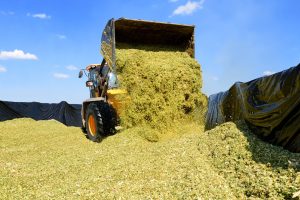
FIGURES released this week by Defra show that more than 28,000 cattle were slaughtered in England last year after testing positive for bTB. They also show more than 3,950 herds that had previously been clear of the disease were affected by it.
The quarterly publication – which can be read here – gives details of bTB incidence in Great Britain. The stats show that new herd incidents and herds under disease restrictions rose in England in the year to December 2015, but in Scotland and Wales disease levels remained relatively unchanged.
The number of animals slaughtered under TB control rules declined in the edge and low-risk areas of England and in Scotland, but rose in Wales and the high-risk area of England.
Upon releasing the figures, Defra said: “Short term changes in these statistics should be considered in the context of long term trends.”The longterm data suggests: “There has been an overall long-term upward trend in the incidence of TB in cattle herds in England and Wales since 1996 [when the stats release began] although there is evidence that the rate of new incidents is levelling off in most areas of the country.”
NFU Deputy President Minette Batters said: “These figures make sombre reading for anyone who is fighting a daily battle against bovine TB or has experienced the devastation it can cause to a farming family business.”
Ms Batters continued: “These figures reinforce the need for the Government’s 25-year TB eradication strategy to be implemented in full as quickly as possible. We have always said that all available options need to be used – cattle movement controls, cattle testing and biosecurity all have a role to play. But dealing with the disease reservoir in wildlife in areas where it is endemic is a vital part of the strategy.
Animal welfare campaigners from the Badger Trust welcomed the cattlebased measures, as well as government funding that will help farmers with the financial burden of stricter testing. They urged the government to look to Wales, where a proposed badger culling policy was replaced by cattle-based measures and a vaccination programme in 2012.
However, looking at Wales, NFU Cymru says that the latest figures starkly highlight the need for the next Welsh Government to put the implementation of a comprehensive TB eradication strategy at the top of its agenda.
According to the NFU, in 2015 8,103 cattle were slaughtered as a result of bovine TB – a massive hike of 27% on 2014 figures when 6,378 cattle were slaughtered in Wales. The number of new herd incidents in 2015 and herds not free of the disease at the end of the year remained relatively static compared to 2014 figures.
Stephen James, NFU Cymru President said: “Since 2008 over 68,000 cattle in Wales have been slaughtered because of this disease, this is despite the fact that Welsh farmers have adhered to stringent cattle movement and testing controls. This disease continues to cause untold heartache and stress to cattle farmers across Wales and places an enormous emotional and financial strain on farming families.
“Whilst we recognise that the bovine TB picture is more complex than just looking at one statistic, these figures should make politicians from all parties in Wales sit up and take notice of the impact that bovine TB continues to have on cattle farmers in Wales. The new Government, following the May National Assembly elections, must come forward and be prepared to work with industry on a comprehensive plan of action that tackles this disease in both the cattle and wildlife populations.
“Cattle movement controls, cattle testing and biosecurity all have a vital role to play in a TB eradication plan, but experience from across the globe has shown that a genuine TB eradication plan must also include a strategy for dealing with the disease reservoir in wildlife in areas where it is endemic.
“The fact that there is a global shortage of BCG vaccine means that no politician or party can hide behind badger vaccination as their sole policy for dealing with the disease in wildlife.”
Stephen James concluded: “Ahead of National Assembly for Wales elections this May we have asked all parties to clearly set out their policy for dealing with the reservoir of infection in our wildlife populations.
“Our manifesto for the elections places a TB eradication strategy that removes disease from cattle and Wildlife as a key priority in helping us to achieve our vision of a productive, profitable and progressive Welsh agricultural industry. We will be looking for the new Government to take action as a matter of urgency.”
As part of its contribution to the debate, the Badger Trust is running a Selfie campaign ‘for everyone who loves and wants to protect badgers to give us their support’.
Meanwhile, Deputy Minister for Farming and Food, Rebecca Evans, has reminded farmers that from 1 April the new TB Order will come into force changing the way they are compensated for cattle slaughtered for TB.
The changes are intended to reduce the risk of the disease spreading by encouraging best practice and follows a consultation with the industry.
The changes provide the Welsh Government further powers to reduce compensation where a person has not followed the rules on testing and cattle movements. Cattle keepers will always be paid the slaughter value of the animal as a minimum and payments will be capped at £15,000 per animal.
Rebecca Evans said: “These changes will penalise a minority of cattle keepers who undertake risky practices, such as failing to present cattle for testing, valuation or removal, which can contribute to the spread of TB. In these cases, compensation could be reduced by up to 95%.
“The vast majority of farmers abide by the rules and are working with us to eradicate this disease. For these people, little about how their animals are valued or compensated will change in the vast majority of cases full compensation based on market value will continue to be paid.”
Also launching on April 1 is www. ibTB.co.uk, a new website which provides information on locations of TB breakdowns to help people make informed decisions on how they can protect cattle and other animals from TB.
The TB Order was changed last year to allow the Welsh Government to publish details of herds affected by bovine TB. The aim is to provide information to help reduce the risk of the disease spreading locally and through cattle movements.
Chief Veterinary Officer for Wales, Christianne Glossop, said: “One of the primary goals of our TB Eradication Programme is to prevent the disease spreading to TB-free farms.
“We aim to provide as much information as possible about potential TB risks to those making purchasing and other cattle movement decisions. I encourage people to use this information to take precautions to reduce the risk of TB spreading.”

















Add Comment